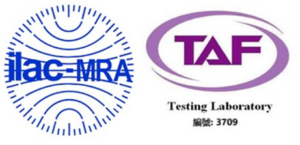
Knowledge Sharing
- On
- InUncategorized

Knowledge Sharing
Q: What is EMC?
EMC (Electromagnetic Compatibility) refers to the ability of a product or device to operate properly in its electromagnetic environment without causing unacceptable interference to other nearby equipment. Therefore, EMC includes two main aspects:
EMI (Electromagnetic Interference): The phenomenon where electromagnetic energy generated by an electrical or electronic product interferes with other electronic or electrical devices in use.
EMS (Electromagnetic Susceptibility): The phenomenon where an electronic or electrical product experiences degradation or abnormal behavior due to electromagnetic energy from the surrounding environment.
Q: Why does my product need to pass EMC testing?
Most countries around the world have regulations and requirements for EMC. A product must pass EMC testing to be allowed for sale in specific countries, and it also increases consumer confidence in the product.
| United States: FCC | European Union: CE |
| Taiwan: BSMI | Japan: VCCI |
| China: 3C | Australia: C-Tick |
| South Korea: MIC |
European Union –
About CE
Q: Where is it applicable?
The following countries accept the CE mark as proof of product quality. The list includes the 15 original EU member states, new EU member states, and member countries of the European Free Trade Association (EFTA):
| Austria | Iceland | Sweden |
| Poland | Slovakia | France |
| Malta | Denmark | Liechtenstein |
| Belgium | Ireland | Switzerland |
| Hungary | Slovenia | Germany |
| Norway | Estonia | Lithuania |
| Cyprus | Italy | Turkey |
| Netherlands | Spain | Greece |
| Portugal | Finland | Luxembourg |
| Czech Republic | Latvia | United Kingdom |
Q: Why is the CE mark necessary?
Q: How should the CE mark be labeled?
The CE mark must follow the specified proportions, with the height of the letters “CE” being at least 5mm, and it must be affixed directly on the product.
If, due to the nature of the product, it is not possible to affix the CE mark on the product itself, it may instead be placed on the packaging.
For products requiring the involvement of a European Notified Body—such as Class I medical devices—the CE mark must be accompanied by the Notified Body’s identification number (e.g., DNV (0434), TUV (0139)).
List of Directives Related to CE Marking:
| Directive reference | Subject of directive |
| 90/396/EEC | Appliances burning gaseous fuels |
| 2000/9/EC | Cableway installations designed to carry persons |
| 89/106/EEC | Construction products |
| 2004/108/EC | Electromagnetic compatibility |
| 94/9/EC | Equipment and protective systems intended for use in potentially explosive atmospheres (ATEX) |
| 93/15/EEC | Civil explosives |
| 95/16/EC | Lifts |
| 2006/95/EC | Low voltage electrical equipment |
| 98/37/EC | Machinery safety |
| 2004/22/EEC | Measuring instruments |
| 90/385/EEC | Active implantable medical devices |
| 93/42/EEC | Medical devices (general) |
| 98/79/EC | In vitro diagnostic medical devices |
| 92/42/EEC | Hot-water boilers |
| 90/384/EEC | Non-automatic weighing instruments |
| 94/62/EC | Packaging and packaging waste |
| 89/686/EEC | Personal protective equipment (PPE) |
| 97/23/EC | Pressure equipment |
| 1999/5/EC | Radio equipment and telecommunications terminal equipment |
| 94/25/EC | Recreational craft |
| 87/404/EEC | Simple pressure vessels |
| 88/378/EEC | Toy safety |
一些特定的產品需要透過驗證機關的審核。舉例來說:多數的醫療設備、部分無線電發射器、意圖在爆炸性環境中使用的設備…等等。產品數於上述這些產品類別,製造商需要提供所有產品的相關文件,包括在產品上市前提供所有評鑑資訊給驗證機關。實務上,這些設備的生產製造商應與驗證機關緊密合作,以確保評鑑文件的適當性。
Q: What is LVD?
LVD stands for Low Voltage Directive. Under the requirements of LVD, electrical products must comply with specific standards to ensure user safety, such as protection against electric shock, fire, and mechanical hazards.
The term “low voltage electrical products” refers to products designed to operate within a voltage range of 50V to 1,000V AC and 75V to 1,500V DC. Only when a product complies with this directive can it be legally sold in the market.
Common LVD Standards
| Reference Standard | Description |
| EN60950 | Information technology and office equipment |
| EN61010 | Measurement, control, and laboratory use equipment |
| EN60335-1 | Safety of household appliances – Part 1: General requirements |
| EN60335-2-X | EN 60335-2-X covers safety requirements for nearly 100 types of household and similar electrical appliances. From large appliances like refrigerators and water heaters to smaller ones like irons, EN 60335-2-X provides specific requirements for each type of device. |
| EN60065 | Audio, video, and similar electronic apparatus |
| EN60529 | Protection Provided by Enclosures |
| EN60125 | Safety Requirements for Radio Transmitters |
| EN61558-1 | Transformers and Power Supply Units |
Consumer products not covered under LVD fall under the General Product Safety Directive (GPSD 2001/95/EC).
Q: Technical Documentation for the Low Voltage Directive (LVD)
Newsletter Updates
Enter your email address below and subscribe to our newsletter

